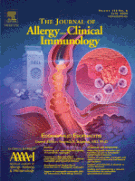Detection of specific IgE to quinolones - 25/08/11
Abstract |
Rationale |
Immediate adverse reactions to quinolones (IARQ) like urticaria, angioedema and shock are observed with increasing frequency. Our aim was to assess if these reactions are IgE-mediated.
Methods |
We studied 55 patients with IARQ. Sixty-two percent of the patients recalled a previous exposure to quinolones. Two control groups were tested: 22 atopic individuals without history of ADR and 10 individuals who tolerated quinolones. We did not perform skin tests because they induce false positive results. Because of the severity of the reactions no provocation test was performed. IgE to quinolones was tested by a RIA using epoxy-activated sepharose 6B as solid phase, to which quinolones (ciprofloxacin, cinoxacin, lomefloxacin, ofloxacin, pipemidic acid, pefloxacin, norfloxacin, nalidixic acid, rufloxacin) were covalently coupled.
Results |
The test yielded positive results in 30 patients (54.5%), tested 1-48 months after the reaction, and negative in the controls. In atopic patients, the quinolone-specific IgE seems to persist longer. The test negative patients may have lost drug specific IgE with time, reacted with an epitope of the quinolone not detectable in the test system or had actually pseudoallergic reactions. Inhibition of the uptake by various quinolones, but not by non related molecules (amoxicillin, penicillin G, cefuroxim, rifampicin and 4-aminoantipirin) demonstrated the specificity of binding of IgE to quinolones. These inhibition studies also allowed to identify a common epitope, which might explain the broad serological and clinical cross-reactivity.
Conclusions |
A substantial part of IARQ appear to be IgE-mediated. Cross-reactivity is frequent and suggests that all quinolones should be avoided in these patients.
El texto completo de este artículo está disponible en PDF.| Funding: Self-funded |
Vol 113 - N° 2S
P. S68 - février 2004 Regresar al númeroBienvenido a EM-consulte, la referencia de los profesionales de la salud.
El acceso al texto completo de este artículo requiere una suscripción.
¿Ya suscrito a @@106933@@ revista ?

